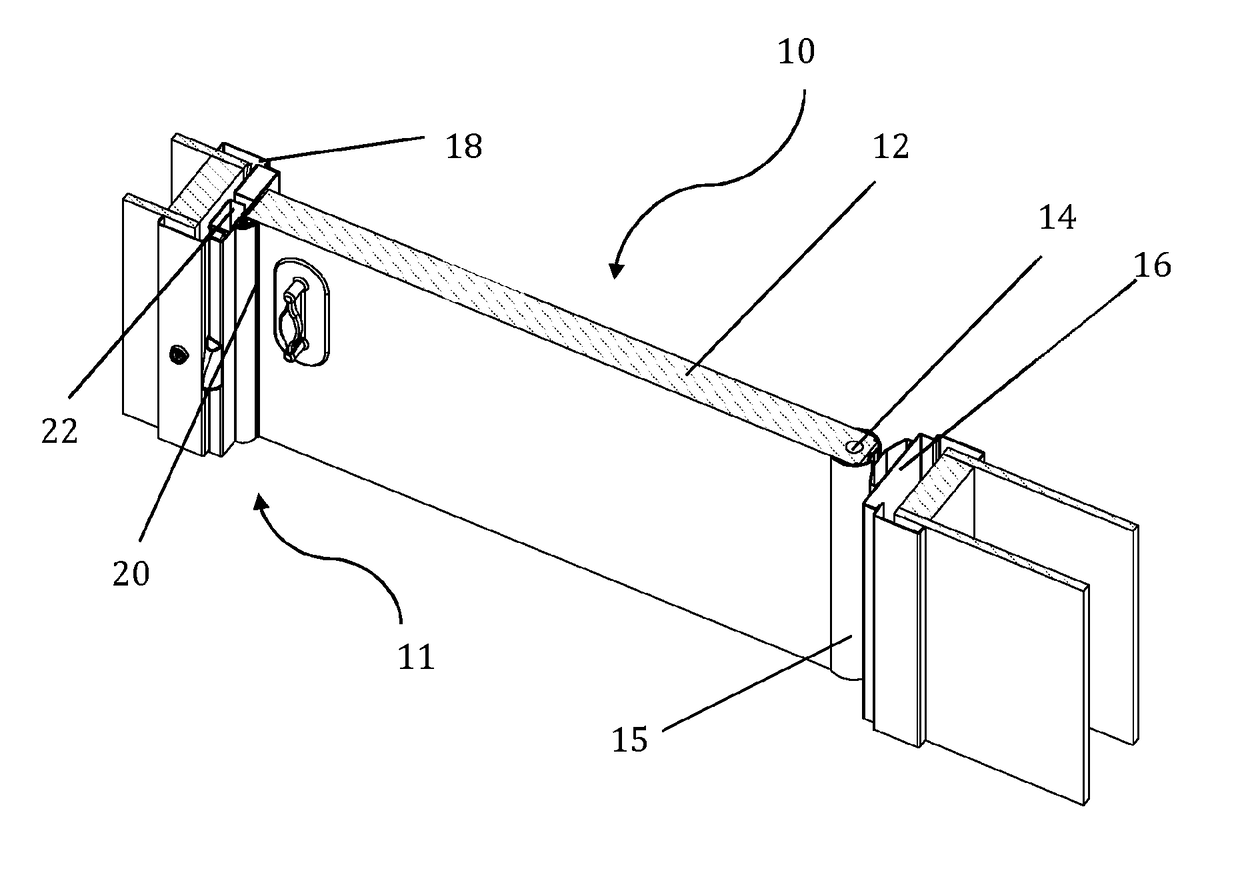Anti-barricade door stop
a door stop and anti-barricade technology, applied in the direction of carpet fasteners, dwelling equipment, building components, etc., can solve the problems of door stop binding, trapping or other injury risk,
- Summary
- Abstract
- Description
- Claims
- Application Information
AI Technical Summary
Benefits of technology
Problems solved by technology
Method used
Image
Examples
Embodiment Construction
[0085]While the making and using of various embodiments of the present invention are discussed in detail below, it should be appreciated that the present invention provides inventive concepts that can be embodied in a wide variety of specific contexts. The specific embodiments discussed herein are merely illustrative of specific ways to make and use the invention and do not delimit the scope of the invention.
[0086]The present invention relates to a door assembly which is adapted to allow reversible modification of the door assembly from a single-swing mode of operation to a double-swing mode of operation when needed, e.g. in a barricade situation.
[0087]FIG. 1 shows a cross section of door assembly 10 which is an exemplary embodiment of the present invention. The door assembly 10 comprises a door 12, which is pivotably mounted in a frame via a double swing hinge 14. The two vertical door jambs (hinge side jamb 16 and latch side jamb 18) are shown.
[0088]As can be seen, the door has a ...
PUM
 Login to View More
Login to View More Abstract
Description
Claims
Application Information
 Login to View More
Login to View More - R&D
- Intellectual Property
- Life Sciences
- Materials
- Tech Scout
- Unparalleled Data Quality
- Higher Quality Content
- 60% Fewer Hallucinations
Browse by: Latest US Patents, China's latest patents, Technical Efficacy Thesaurus, Application Domain, Technology Topic, Popular Technical Reports.
© 2025 PatSnap. All rights reserved.Legal|Privacy policy|Modern Slavery Act Transparency Statement|Sitemap|About US| Contact US: help@patsnap.com



